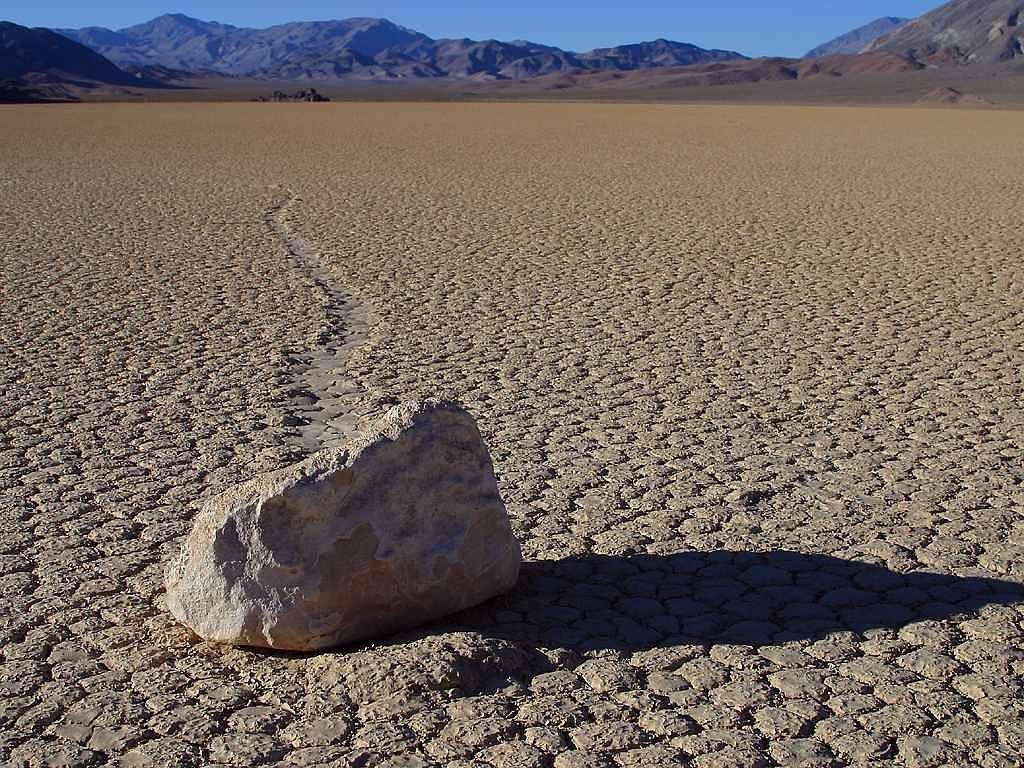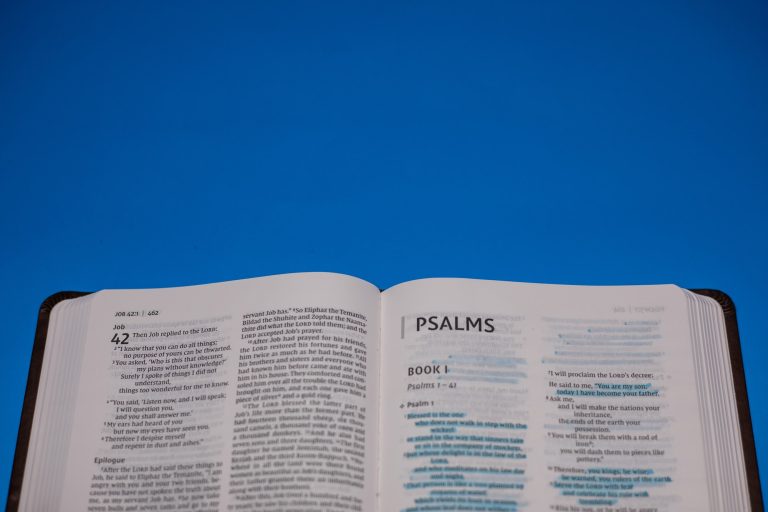Migrating Stones

“And I also say to you that you are Peter, and on this rock I will build My church, and the gates of Hades shall not prevail against it.” [Matthew 16:18]
First recorded about 100 years ago, the mysterious Sailing Stones of Death Valley have been a documented fact for decades. Within the famous California desert is a dry lakebed called the Racetrack Playa that measures about 2.5 miles long and one mile wide. Scattered across the mosaic of cracked clay on the flat lakebed are hundred of stones in varying sizes. No big deal, right? The amazing thing is that many of these stones have long tracks behind them where they have obviously moved.
Now you need to picture that some of the sliding stones weigh hundreds of pounds. Additionally, some of these trails left by the roaming rocks are hundreds of yards long. Some stones make straight tracks, others make oval or 90 degree turns, while still others create wavy-shaped trails. How can a stone that weighs more than 500 pounds drag itself across flat ground? For nearly a century many geologists have studied and mapped the drifting stones in Death Valley, and it has become quite a puzzle. As the years proceed, each stone takes its own different path. Some of the mysterious migrating stones even slide uphill.
It seems now there is a plausible theory that has solved the amazing mystery. Occasionally, winter rains will fill the lake with a foot or so of water that freezes. As the edges of the shallow lake thaw, the giant floating ice pancake in the middle can get pushed around by the hurricane-force winds that are common in this valley. Rocks captured in this layer of ice are pushed along with the frozen mass, gouging trails in the slick clay below. Of course when the ice melts all you see are the rocks and the trails. Still, no one has ever seen the rocks move, nor does anyone know how fast they go.
Jesus said He was going to build His church on an immovable rock. Matthew provides a play on the Greek words in this crucial quotation from Jesus: “You are petros (a small throwable stone), and on this petra (the feminine form of petros, which indicates an immovable ledge of rock) I will build My church.” Peter is addressed and told that his confession is the petra upon which Jesus will build His church. With that rock as our foundation, we cannot be moved.





